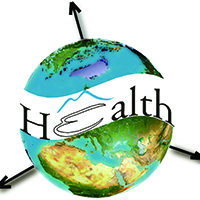Spatiotemporal heterogeneity of SARS-CoV-2 diffusion at the city level using geographically weighted Poisson regression model: The case of Bologna, Italy

All claims expressed in this article are solely those of the authors and do not necessarily represent those of their affiliated organizations, or those of the publisher, the editors and the reviewers. Any product that may be evaluated in this article or claim that may be made by its manufacturer is not guaranteed or endorsed by the publisher.
Authors
This paper aimed to analyse the spatio-temporal patterns of the diffusion of SARS-CoV-2, the virus causing coronavirus 2019 (COVID-19, in the city of Bologna, the capital and largest city of the Emilia-Romagna Region in northern Italy. The study took place from February 1st, 2020 to November 20th, 2021 and accounted for space, sociodemographic characteristics and health conditions of the resident population. A second goal was to derive a model for the level of risk of being infected by SARS-CoV-2 and to identify and measure the place-specific factors associated with the disease and its determinants. Spatial heterogeneity was tested by comparing global Poisson regression (GPR) and local geographically weighted Poisson regression (GWPR) models. The key findings were that different city areas were impacted differently during the first three epidemic waves. The area-to-area influence was estimated to exert its effect over an area with 4.7 km radius. Spatio-temporal heterogeneity patterns were found to be independent of the sociodemographic and the clinical characteristics of the resident population. Significant single-individual risk factors for detected SARS-CoV-2 infection cases were old age, hypertension, diabetes and co-morbidities. More specifically, in the global model, the average SARS-CoV-2 infection rate decreased 0.93-fold in the 21–65 years age group compared to the >65 years age group, whereas hypertension, diabetes, and any other co-morbidities (present vs absent), increased 1.28-, 1.39- and 1.15-fold, respectively. The local GWPR model had a better fit better than GPR. Due to the global geographical distribution of the pandemic, local estimates are essential for mitigating or strengthening security measures.
How to Cite

This work is licensed under a Creative Commons Attribution-NonCommercial 4.0 International License.








